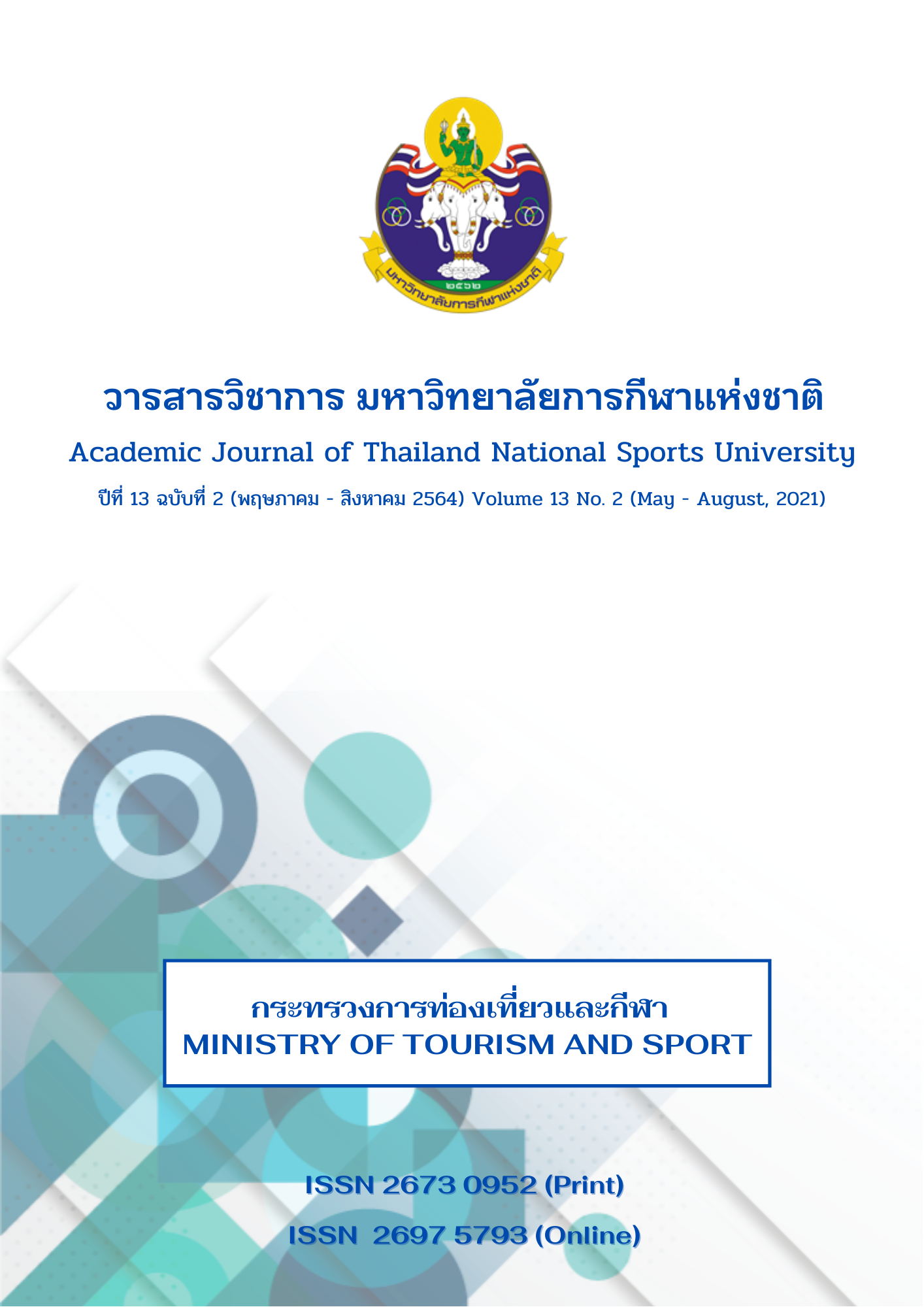FACTORS INFLUENCING THE INTENTION TO WATCH MIXED MARTIAL ART COMPETITION BROADCASTING IN THAILAND
Main Article Content
Abstract
The purpose of this research was to study the factors influencing the intention to watch mixed martial art (MMA) competition broadcasting in Thailand. The questionnaire and interview were used as tools of a survey method to collect all data from broadcasting viewers who watched mixed martial art competition. Population were 443 Thai viewers, 15 years of age and over, from Bangkok and vicinities. Stratified random sampling was applied to divide all the viewers into 3 groups. 1. Group of people who trained mixed martial art in the number of 52 people. 2. Group of people who watched mixed martial art competition only in the number of 103 people. 3. Group of people who trained other martial arts in the number of 288 people. The statistical tools used in this study are frequency, percentage, mean, standard deviation and testing the relationship between factors by Multiple Regression Analysis. The research results indicated that the factors influencing the intention to watch mixed martial art competition includeed rules, relationship with mixed martial art, public relations, the importance of competition and ring girls.
Article Details
The published article is a copyright of the Academic Journal of Thailand National Sports University. The passage appeared in each article in this academic journal is a perspective of each author which is not related to the journal. Each author is required to be responsible for all components of his/her own article. If there are any mistakes, each author must be responsible for those mistakes on his/her own.
References
Clow, K. E., & D. Baack. (2012). Cases in marketing management. Thousand Oaks: SAGE publications, Inc.
Dann, J. (2014). Mixed martial arts: 11 things you REALLY need to know about the world’s fastest growing sport. Retrieved from http://www.mirror.co.uk/sport/other-sports/mma/11-things-you-really-need-3277676
Funk, D., Mahony, D., & Ridinger, L. (2002). Characterizing consumer motivation as individual difference factors: Augmenting the Sport Interest Inventory (SII) to explain level of spectator support. Sport Marketing Quarterly, 11(1), 33-44.
Garcia, R. S., & D. Malcolm. (2010). Decivilizing, civilizing or informalizing: The international development of Mixed Martial Arts. International Review of the Sociology of Sport, 45(1), 39-58.
Patikarn Chuenchomeboon. (2010). Sex appeal in Thai advertising film (Master’s thesis), Thammasat University, Faculty of Journalism and Mass Communication.
Personnel Development Institute, Office of Sports and Recreation Development, Ministry of Tourism and Sports. (2008). Football Referee Guide. Bangkok: The Agricultural Co-operative Federation of Thailand, Limited.
Shank, M. D. (2009). Sports marketing: A strategic perspective (4th ed.). Pearson International Edition. Prentice–Hall.
Sloan, L.R (1989). The motives of sports fans. In J.H Goldstein (ed.), Sports, games, and play: Social & psychological viewpoints (2nd ed.). Hillsdale, NJ: Lawrence Erlbaum Associates.
Taylor, M., & M. L. Kent. (2010). Anticipating socialization in the use of social media in public relations: a content analysis of PRSA’s public relations tactics. Public Relations Review, 36, 207-214.
Trail, G. T., & James, J. (2001). Analysis of sport fan motivation scale. Journal of Sport Behavior, 24(1), 108-128.
Wann, D. L. (1995). Preliminary validation of the sport fan motivation scale. Journal of Sport and Social Issues, 19, 377 – 396.


